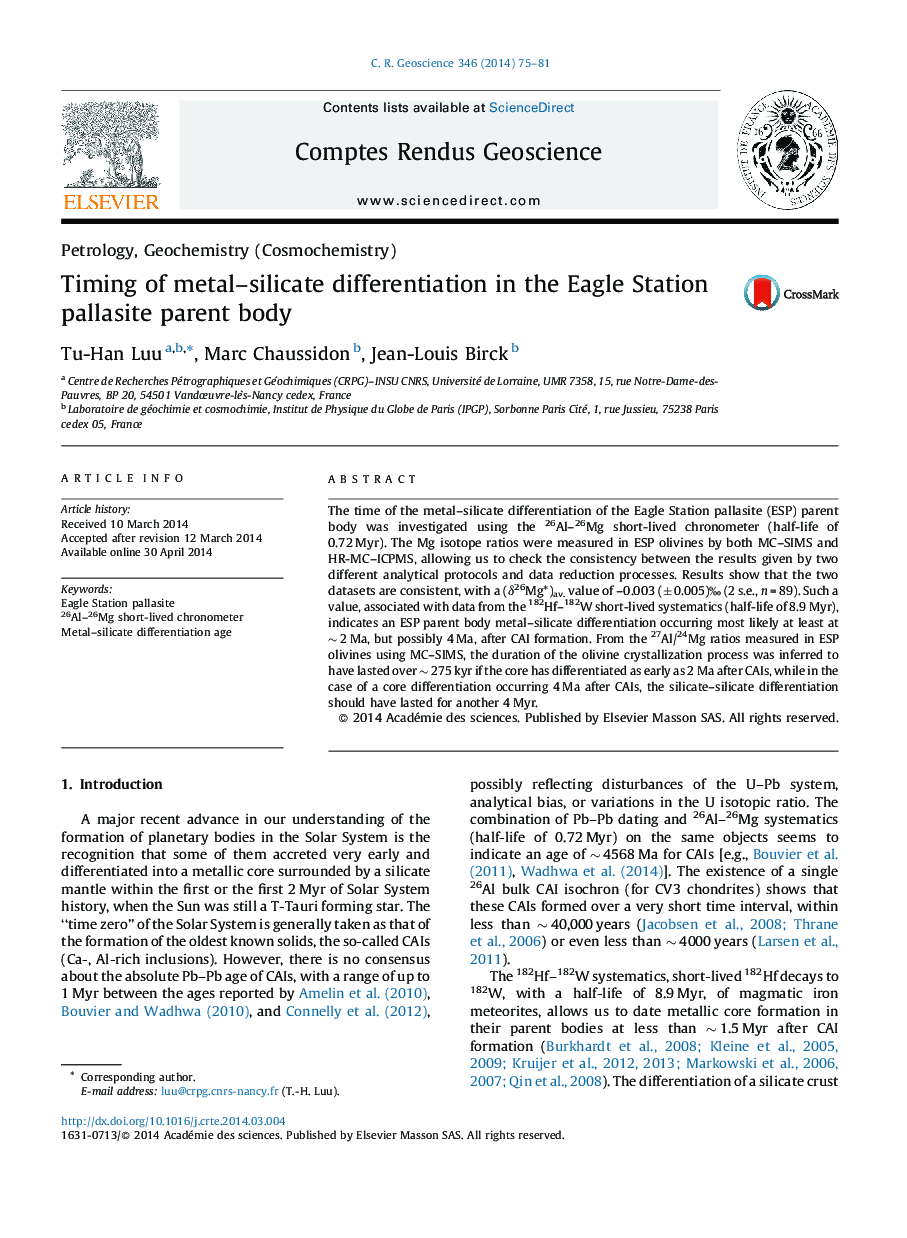| Article ID | Journal | Published Year | Pages | File Type |
|---|---|---|---|---|
| 4462214 | Comptes Rendus Geoscience | 2014 | 7 Pages |
The time of the metal–silicate differentiation of the Eagle Station pallasite (ESP) parent body was investigated using the 26Al–26Mg short-lived chronometer (half-life of 0.72 Myr). The Mg isotope ratios were measured in ESP olivines by both MC–SIMS and HR-MC–ICPMS, allowing us to check the consistency between the results given by two different analytical protocols and data reduction processes. Results show that the two datasets are consistent, with a (δ26Mg*)av. value of –0.003 (± 0.005)‰ (2 s.e., n = 89). Such a value, associated with data from the 182Hf–182W short-lived systematics (half-life of 8.9 Myr), indicates an ESP parent body metal–silicate differentiation occurring most likely at least at ∼ 2 Ma, but possibly 4 Ma, after CAI formation. From the 27Al/24Mg ratios measured in ESP olivines using MC–SIMS, the duration of the olivine crystallization process was inferred to have lasted over ∼ 275 kyr if the core has differentiated as early as 2 Ma after CAIs, while in the case of a core differentiation occurring 4 Ma after CAIs, the silicate–silicate differentiation should have lasted for another 4 Myr.
